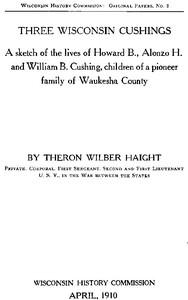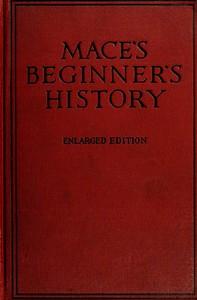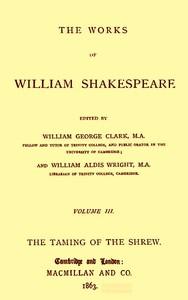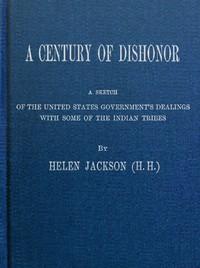Read this ebook for free! No credit card needed, absolutely nothing to pay.
Words: 191044 in 40 pages
This is an ebook sharing website. You can read the uploaded ebooks for free here. No credit cards needed, nothing to pay. If you want to own a digital copy of the ebook, or want to read offline with your favorite ebook-reader, then you can choose to buy and download the ebook.


: History of Brighthelmston; or Brighton as I View it and Others Knew It With a Chronological Table of Local Events by Erredge John Ackerson - Brighton (England) History
Although there is no doubt that the vicinity of Brighton at a very remote period was occupied as a Roman military station, it is not the intention of the compiler of this work to date, merely on supposition, the origin of the town, coeval as it might have been with the landing of Julius Caesar in Britain. The "Magna Britannia," published in 1737, mentions:--"As to the antiquity of this town, there is reason to believe it to have stood a vast tract of time. From the accounts our historians give of it, for some of them speak of it ever since Julius Caesar's arrival in Britain, and affirm, that this was the place where he landed his legions; but since others assert his landing to have been at Hastings, we shall not be very positive, yet may justly insist upon it as most probable, because there is good anchorage in the bay here; and besides, there appears on the west side of this town to this day, for near a mile together, vast numbers of men's bones, and some of them of prodigious size, which plainly proves that there has been some warlike engagement near it." As an illustration that what has been transmitted to us orally, especially of remote periods, cannot be relied on, there is told the following tale of "Caesar's Stile":--Dr. Stukely, or some other antiquarian, was travelling through England, when he heard that on a certain hill there was a stile called Caesar's Stile. "Ay," said the doctor, "such a road, mentioned in Antoninus, passed near here; and the traditional name confirms the possibility of a Roman camp on this spot." Whilst he was surveying the prospect, a peasant came up, whom the doctor addressed thus--"They call this Caesar's Stile, my friend, do they not?" "Ees, zur," said the man, "they calls it so arter poor old Bob Caesar, the carpenter; rest his soul; I holped him to make it, when I was a boy."
Relicts of the ancient Britons, before the time of the Romans in Britain, have at various times been found in the vicinity of Brighton. The most perfect were those discovered in a Barrow in Coney-burrow field, Hove, in January, 1856. In this field was a mound about 20 feet high, situated north of the pathway from Brighton to Hove, about N.N.E. of the church of St. John the Baptist. Some 40 years since, this hillock was covered with furze, and was a burrow for rabbits; but at a more recent date, when the habitations of men became erected contiguous, and the human family extended thither, the colony of rabbits dispersed, and their abode became the rendezvous of rustic games. Our highly respected local antiquarian, Barclay Phillips, Esq., thus describes it, and the incidents connected with it:--
"Rising from a perfectly level plain, and being unconnected with any other hills, it always presented the appearance of an artificial mound, and therefore, when, some years ago, a road was cut through it to the Hove Station of the Brighton and Portsmouth Railway, I was anxious to learn whether any antiquities had been met with; but not any were then found. Now, however, all doubt on the subject has been set at rest, and the hillock proved to be a Barrow, or monumental mound erected over the remains of an ancient British chieftain. Labourers have recently been employed removing the earth of this hill, and last week, on reaching the centre of the mound, about two yards west of the road leading to Hove Station, and about nine feet below the surface, dug out a rude coffin between six and seven feet long. On exposure to the atmosphere the boards immediately crumbled away; but a few of the knots remained, and prove to be of oak. The coffin contained small fragments of bone, some of which I have seen, and the following curious relics:--
"1. An Amber Cup, with a handle on one side. It is hemispherical in shape, rather deep, with a lip turning outwards, and is ornamented merely with a band of fine lines running round the outside about half an inch from the top. From the fact of the rim not being perfectly round, and the band before-mentioned not passing over the space within the handle, and its being marked off at each end with a line seemingly cut across, we may conjecture it to have been made and carved by hand.
"2. Head of a Battle Axe, about five inches long. It is in perfect preservation, and made of some sort of iron-stone, the wooden handle, having of course, long since decayed.
"3. A small Whetstone, with a hole neatly drilled through one end, so that it might be suspended by a thong to the person, and carried about.
"4. A Bronze Spear Head, very much oxidised, and so brittle that it broke into halves as it was being taken out of the ground. Two of the rivets and fragments of the spear handle still remain attached to the lower end of the blade.
"The workmen described the coffin as resting on the natural soil, which is stiff yellow clay, while the mound itself bears every appearance of having been formed of surface earth and rubbish thrown up together. I minutely examined the sections of the hill, and myself picked out several specimens of charred wood, and was informed that such fragments were very abundant.
"The manner of sepulture and all the relics, excepting the spear head, indicate this mound as having been the burial-place of a British chieftain before the time of the Roman invasion;--the spear-head certainly more nearly, though not exactly, resembles those used afterwards. The mound was of the simplest and most ancient form, and therefore I am inclined to think we may reckon it as at least 2000 years old, perhaps more! It has now disappeared. The last clod of that earth which so long covered the bones of a British chieftain was this afternoon carted away; and coffin, bones, and earth have been thrown pell-mell to form the mould of the future rosary of Palmyra square."
At a meeting of the Archaeological Society in London, about a month after the opening of this barrow, the cup, &c., were exhibited; when Mr. Kemble and other celebrated antiquaries gave their opinion thus:--"The cup is the only known specimen of so large a size, and the battle axe is superior to any similar object in the British Museum." Mr. Hawkins and Mr. Franks, who have the care of the antiquarian departments, both declared the "find" in this barrow to have been the richest ever known. These rare specimens of local antiquity, through the kindness of Sir Francis Goldsmid, of "The Wick," on whose land they were found, form a prominent feature of the Brighton Museum, at the Royal Pavilion.
Brighton is situated in 50?.55?. N. latitude, and about 3?. W. longitude, on the eastern side of a shallow bay of the south coast. The centre of the town is in a valley, which at the north diverges to Preston in two courses prominently marked by the London road and the Lewes road, Hollingbury Hill intervening. The east and north-west portions of the town are on acclivities, that to the east terminating abruptly at the south in cliffs ranging from 60 to 80 feet in height; and that to the north-west gradually sloping to the sea-shore. The southern front is bold, and commands an extensive view of the British Channel from Beachy Head to Selsea Bill.
The soil to the east and north-west is principally a thick substratum of chalk, covered with a thin layer of earth. The subsoil of the centre is marl and shingle; and to the westward there are large beds of clay of very irregular character. Dr. Mantell, in his valuable work, "The Geology of the South-east of England," says:--"The town of Brighton is situated on an immense accumulation of water-worn materials, which fills up a valley, or hollow, in the chalk. The diluvial deposit is bounded on the north-west by the South Downs; on the east it extends to Rottingdean, and is there terminated by the chalk; on the west it may be traced more or less distinctly to Bignor; on the south it is washed by the sea, and forms a line of cliffs from 70 to 80 feet high; these exhibit a vertical section of the strata, and enable us to ascertain their nature and position."
Free books android app tbrJar TBR JAR Read Free books online gutenberg
More posts by @FreeBooks

: Three Wisconsin Cushings A sketch of the lives of Howard B. Alonzo H. and William B. Cushing children of a pioneer family of Waukesha County by Haight Theron Wilber - United States History Civil War 1861-1865 Biography; Cushing Howard Bass -1871; Cushing


: A Beginner's History by Mace William H William Harrison Audibert P Raymond Illustrator Colby Homer Wayland Illustrator Reich Jacques Illustrator Williamson B F Illustrator - United States History


: The Works of William Shakespeare [Cambridge Edition] [Vol. 3 of 9] by Shakespeare William Clark William George Editor Wright William Aldis Editor - English drama




